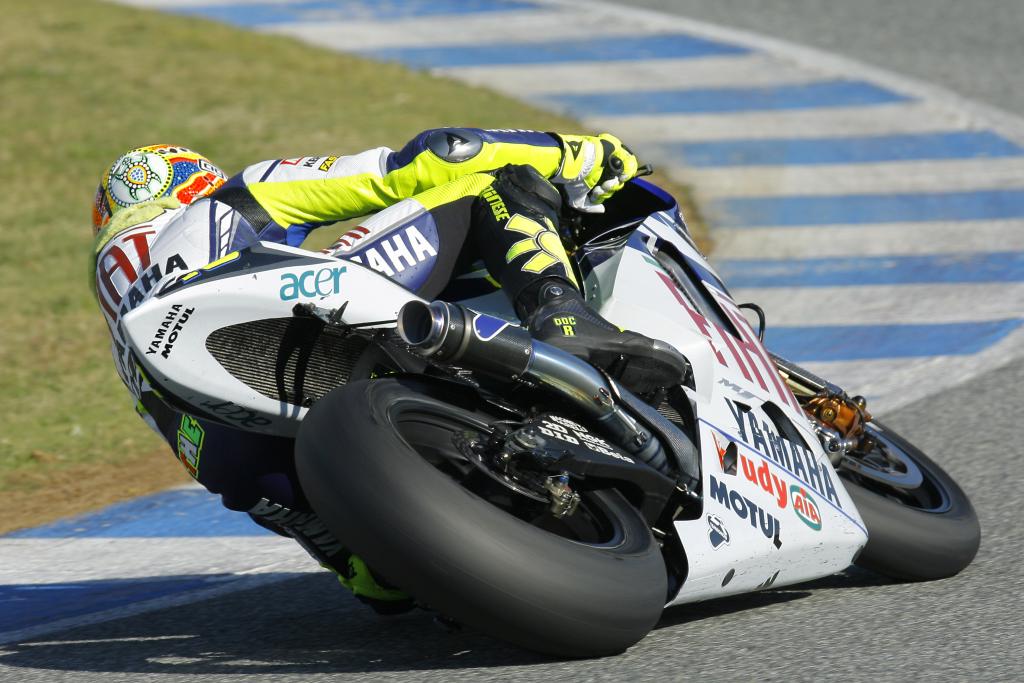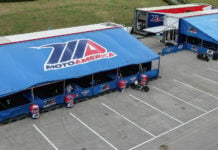Road Racing World Championship Grand Prix Amendments to the Regulations The Grand Prix Commission, composed of Messrs. Carmelo Ezpeleta (Dorna, Chairman), Claude Danis (FIM), Hervé Poncharal (IRTA) and Takanao Tsubouchi (MSMA), in the presence of M. Paul Butler (Secretary of the meeting), in a meeting held on December 12 in Barcelona, unanimously decided to introduce the following amendments (see attached pdf file) to the Road Racing World Championship Grand Prix Regulations application as from 1st January 2008. Changes to the Regulations Sporting Regulations 1.3 The Paddock 1.3.4 When the Paddock is occupied there must be an adequate medical and fire fighting service available to all riders, teams, manufacturers, sponsors, service companies, officials, FIM, Dorna, IRTA, etc. At minimum the services must be available from 08.00 18.00hrs on the two days prior to the “setting up of teams day”, and on a 24 hour basis for the remainder of the event, ending at midnight on the day after race day. 1.15 Practice 1.15.1 Practice Restrictions 1.15.1.3 Tyre company testing a) Tyre manufacturers that supply tyres to the MotoGP class may, prior to the first event of each year, designate and inform the Race Direction of one Grand Prix circuit as their testing circuit at which they may practice during the season and during the breaks with MotoGP class machines during a maximum of 4 days or part thereof, but not with riders designated by teams and not prior to the event that takes place at that circuit. b) If requested by any tyre manufacturer supplying tyres to the MotoGP class then a 2 day test must be organised, but not with riders designated by teams, at least four weeks before any event scheduled for a Grand Prix circuit that was not in the Championship of the previous year or that, in the opinion of the Grand Prix Commission, has been substantially resurfaced since the previous event at that circuit. 1.18 Start Procedure 7) “¦ MotoGP riders may use a generator to power tyre warmers on the grid. Only one generator per machine may be used. The generator must be of the “hand carried” type and have a maximum output capacity of two kilowatts. 17) “¦(add after last paragraph). The spare machine may remain inside the pit box until such time as it is used in the race, but any exchange of machine must be made in the pit lane. 1.21 Behaviour During Practice and Race 8) Riders may enter the pits during the race, but taking the motorcycle inside the pit box is not permitted. In the MotoGP class, in the case of an exchange of machine during a race (Art. 1.18.17), if a machine that has been active in the race enters the pit box, this machine is deemed to be retired and may not be used again in the race. Refuelling is strictly prohibited. Any infringement of this rule will be penalised with a disqua lification. 17) If the winning rider wishes to parade a flag, he must ride to the side of the racing surface to collect the flag and then rejoin the circuit when it is safe to do so. Technical Regulations 2.2 Classes MotoGP Up to 800cc Unlimited cylinders 2.3 Engines 2.3.1 Engines may operate on the two stroke or four stroke principal only. For MotoGP, only 4 stroke engines are permitted. The normal section of each engine cylinder and piston in plan view must be circular. Circular section cylinders & pistons are defined as having less than 5% difference in the diameter measured at any two points. 2.6 Fuel Tanks 2.6.2 Fuel tank breather pipes must include a non-return valve. Fuel tank breather pipes must discharge into a suitable container, one per motorcycle with a minimum capacity of 200cc and a maximum capacity of 250cc. 2.6.5 The fuel tank capacities for MotoGP prototype motorcycles is maximum 21 litres. “¦ 2.6.6 Refuelling may only be carried out from an unpressurised container, and the motorcycle fuel tank may not be artificially pressurised above atmospheric pressure at any time. It is allowed to vent the fuel tank to the atmosphere via the airbox in order to equalise pressure in the airbox and fuel tank. 2.7 Safety and Construction Criteria 2.7.2.3. Stops must be fitted to ensure a clearance of at least 30mm between the handlebar and the fuel tank frame and/or bodywork when at the extremes of steering lock. 2.7.7 Bodywork 2.7.7.6 The seat unit shall have a maximum height of the (approximately) vertical section behind the rider’s seating position of 150mm. The measurement will be taken at a 90° angle to the upper surface of the flat base at the rider’s seating position, excluding any seat pad or covering. Any on-board camera/antenna mounted on the seat unit is not included in this measurement. 2.7.7.7 Mudguards are not compulsory. When fitted, front mudguards must not extend: a. In front of a line drawn upwards and forwards at 45 degrees from a horizontal line through the front wheel spindle. b. Below a line drawn horizontally and to the rear of the front wheel spindle. The mudguard mounts/brackets and fork-leg covers, close to the suspension leg and wheel spindle, and brake disc covers are not considered part of the mudguard. 2.9 Tyre restrictions for MotoGP 2.9.7 In the unlikely event of a tyre being accidentally damaged before it is used (for example during the fitting process) and deemed to be unusable by the Technical Director, it may be replaced with a tyre of the same specification with the permission of the Technical Director. Such replacement tyres will be marked and included in the allocation of the rider concerned. The damaged tyre will be removed from the allocation and may not be allocated again. 2.10 Numbers and Backgrounds 2.10.3 In the 125cc and 250cc classes, the main body of the number must be of a single colour which is distinctive and strongly contrasts with the background colour. Disciplinary and Arbitration Code 3.4.1 Right of protest Any natural or juridical person rider, team, manufacturer, official etc. – affected by a decision taken under the authority of the FIM, has the right to protest against that decision. No protest may be lodged against a statement of fact of the Race Direction entailing or not: – a change of position. – a ride through. – a disqualification from the practice sessions or races by means of a black flag or black flag with orange disc. – a fine for speeding in the pit lane. No protest may be lodged against a statement of fact of the Race Direction based on a photo finish. 3.4.3 Procedure and time limit for protests All protests must be submitted and signed only by the person directly concerned. Each protest must refer to a single subject only and must be presented within 1 hour at the latest after the publication of the results or the notification of a Race Direction decision. Protests must be handed to a responsible official (Clerk of the Course, Race Director or Secretary of the Meeting) together with the security deposit of USD 700.- or equivalent. Teams and riders contracted to compete in the Championship may submit a letter of guarantee from IRTA in lieu of payment. A protest against the eligibility of a rider, team or a motorcycle entered, must be made before the start of the official practice.
Revised Tire Restrictions Among New MotoGP Rules Approved For 2008
Revised Tire Restrictions Among New MotoGP Rules Approved For 2008
© 2007, Roadracing World Publishing, Inc.





